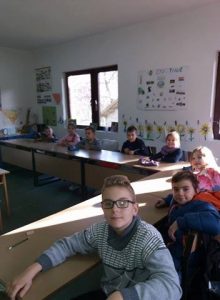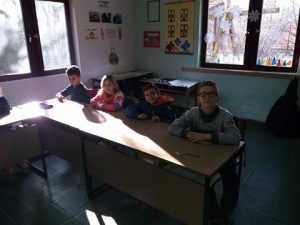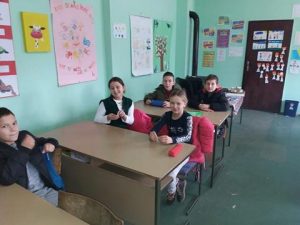Workshop title: To be one´s self and happy
Topic: Stereotypes and prejudices
Trainer: Esmin Brodlija, psychologist and gestalt psychotherapist
2 workshops were held for 2 combined classes on 25 December 2017 in the primary school „Omer Mušić“ Brežani (rural school „Čelikovina“). The workshops are part of the project “Equal education opportunities” that is financed by the federal Ministry of education and science.
The following are the reports by trainers from both workshops:
Participants: grade 2 and 4 students from the primary school „Omer Mušić“ Brežani (rural school „Čelikovina“)
The workshop has helped participants understand what group affiliation is, what it means to be excluded and rejected, how important it is to provide support and offer friendship to children who are in any way different as well as how important group connection, cooperation and trust are.
During the workshop one could see that children had numerous prejudices and stereotypes about various groups of children, and one could hear in the discussion both positive and negative ones. The joint conclusion was that we could not assign a characteristic exhibited by an individual to the whole group and that one should not talk things about others before checking if they are true or not.
The students have learned what prejudices and stereotypes, how to fight them and how to deal with them.
Participants: grade 2 and 4 students from the primary school „Omer Mušić“ Brežani (rural school „Čelikovina“)
The workshop was useful as it helped participants understand which negative feelings can surface up when a person is excluded and rejected, what group affiliation means, what it means to be excluded ad rejected, how important it is to provide support and offer friendship to children who are in any way different as well as how important group connection, cooperation and trust are.
During the workshop one could see that the grade 4 students were more focused on the rivalry between boys and girls and that they had numerous prejudices and stereotypes regarding these two groups as well other groups of children. We could hear in the discussion both positive and negative examples.









